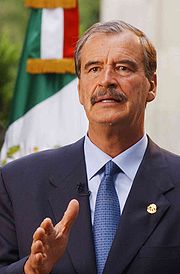Europeans or Whites in Latin America

Beginning in the late fifteenth century, large numbers of Iberian colonists settled in what became Latin America — Portuguese in Brazil and Spaniards elsewhere in the region — and at present most white Latin Americans are of Spanish or Portuguese origin. Iberians brought the Spanish and Portuguese languages, the Catholic faith, and many traditions. In absolute numbers, Brazil has the largest population of whites in Latin America, followed by Argentina and Mexico (see White Latin American).
Millions of Europeans have immigrated to Latin America since most countries gained independence in the 1810s and 1820s, with most of the immigration occurring in the late nineteenth and early twentieth centuries and the bulk of the immigrants settling in Argentina, Uruguay, and Brazil. Italians formed the largest group of immigrants, and next were Spaniards and Portuguese.[12] Many others arrived, such as Germans, Poles, Ukrainians, Russians, Jews, Irish, and Welsh. During the Second Mexican Empire, many more French, Belgians, and Swiss settled in Mexico.[13][14] In Cuba, Whites make up nearly two-thirds of the population.
In some countries like Chile and Costa Rica, the majority of the population belongs to a group referred to as "White and White-Mestizo or Castizo" where both groups are not easily separable.
The Chilean population is approximately 30% to 35% white, with predominantly white-mestizos further numbered at 65%.[15] According to another recent study estimates that Lizcano (2005), the whites population corresponds to a 52.7% of Chileans.[16] These two figures are normally combined, so that Chile's population is classified as 95% white and white-mestizo or Castizo, 3% Amerindian, and 2% other.[15] Whites are mostly Spanish in origin (mainly Castilians, Andalusians and Basques). The more notable other groups are Italians, Irish, French, Germans, English, Scots, Croats, and Palestinian communities, the latter being the largest colony of that people outside of the Arab world,[17] [18] [19]. The largest ethnic group that makes up the Chilean population are arrived from Spain and Basque regions in the south of France. Estimated to be descendants of Basques in Chile from 10% (1,600,000) to as high as 27% (4,500,000).[20] [21] [22] [23] [24]
Some non-Spanish European immigrants arrived in Chile - mainly to the northern and southern extremities of the country - during the 18th, 19th and early 20th centuries, including Britons (includes Scots and Irish), Italians, French, Germans, Austrians, Dutch, Scandinavians, Portuguese, Greeks and former Yugoslavians (esp. Croats). Another group of immigrants are historically significant, Croatian with 380,000 to 500,000 with the highest number of descendants of Croats.[25][26] They did transform the country culturally, economically and politically.
Costa Rica, despite not having received recent immigrant European account maintained Spanishness homogeneity among its people from the colony.
Latin American countries attracted European immigrants to work in agriculture, commerce and industry. Many Latin American governments encouraged immigrants from Europe to 'civilize' the region.[27] Despite their different origins, these immigrants integrated in the local societies and most of their descendants only speak Spanish or, in Brazil, Portuguese. For example, people of Italian descent make up half of Argentina's and Uruguay's population, but only relatively small percentages of them are able to speak Italian. However, in Venezuela, where the population of Italian descent makes up about 30% of the total,[citation needed] there is still a tendency of the communities to preserve the language, as do Germans and Portuguese. Also there are some communities of Germans and Italians across Southern Brazil which still preserve their languages. Brazil has the biggest population of Italians outside of Italy;[28][29] São Paulo city alone has more Italians than Rome, the most populous Italian city.[30][31]
Immigration from the Middle East took place also since the 19th century and consisted largely of Christian Lebanese, Syrians, and Palestinians. They have generally assimilated into the European-descended population.
[edit] Mestizos
Intermixing between Europeans and Amerindians began early and was extensive. The resulting people, known as mestizos, make up the majority of the population in half of the countries of Latin America: Colombia, Ecuador, El Salvador, Guatemala, Honduras, Mexico, Nicaragua, Panama, Paraguay and Venezuela.Additionally, mestizos compose large minorities in nearly all the other mainland countries.
[edit] Mulattoes
Mulattoes are biracial descendants of mixed European and African ancestry, mostly descended from Spanish and Portuguese settlers and African slaves during the colonial period. The vast majority of mulattoes are found in Brazil; Dominican Republic, Cuba, and Colombia are the other countries with large numbers of mulattoes.[1] There is also a small presence of mulattoes in other Latin American countries.[1]
[edit] Zambos

Slaves often ran away (cimarrones) and were taken in by Amerindian villagers. Intermixing between Africans and Amerindians produced descendants known as zambos. This was especially prevalent in Colombia, Venezuela and Brazil.
In addition to the foregoing groups, Latin America also has millions of people of mixed African, Amerindian and European triracial ancestry, mostly in Colombia, Venezuela and Brazil but with a much smaller presence in a number of other countries.
[edit] Racial distribution
The following table shows the different racial groups and their percentages for all Latin American countries and territories.[32]
Country  | Population  | White  | Mestizo  | Mulatto  | Amerindian  | Black  | Mixed  | Other1  |
|---|---|---|---|---|---|---|---|---|
| Argentina | 40,301,927 | 86.4% | 6.5% | 3.4% | 0.4% | |||
| Aruba | 100,018 | 80.0% | 20.0% | |||||
| Belize 2 | 311,500 | 4.3% | 33.8% | 24.9% | 10.6% | 0.3% | 6.1% | 20.0% |
| Bolivia | 9,119,152 | 10.0% | 28.0% | 62.0% | ||||
| Brazil3 | 190,010,647 | 53.7% | 7.4% | 42.3% | 0.8% | |||
| Chile4 | 16,284,741 | 52.7% | 42.7% | 4.6% | ||||
| Colombia | 44,379,598 | 20.0% | 47.3% | 23.0% | 2.0% | 6.0% | 1.0% | |
| Costa Rica | 4,133,884 | 77.0% | 17.0% | 3.0% | 1.0% | 2.0% | ||
| Cuba | 11,177,743 | 65.1% | 24.8% | 10.1% | ||||
| Dominican Republic | 9,365,818 | 17.0% | 69.5% | 11.8% | 1.7% | |||
| Ecuador | 13,755,680 | 10.6% | 42.0% | 40.8% | 5.0% | 1.6% | ||
| El Salvador | 6,948,073 | 1.6% | 88.3% | 9.1% | 1.0% | |||
| French Guiana | 199,509 | 8.0% | 37.9% | 8.0% | 37.1% | 9.0% | ||
| Guadeloupe | 452,776 | 2.0% | 76.7% | 10.0% | 10.0% | 1.3% | ||
| Guatemala | 12,728,111 | 5.0% | 54.4% | 40.5% | 0.1% | |||
| Guyana | 858,863 | 2.0% | 9.4% | 30.2% | 16.7% | 43.5% | ||
| Haiti | 8,706,497 | 94.2% | 5.4% | 0.4% | ||||
| Honduras | 7,483,763 | 2.3% | 86.6% | 5.5% | 4.3% | 1.3% | ||
| Martinique | 436,131 | 3.0% | 93.4% | 3.6% | ||||
| Mexico | 108,700,891 | 16.5% | 64.3% | 18.0% | 0.5% | 0.7% | ||
| Netherlands Antilles | 223,652 | 5.3% | 81.1% | 13.6% | ||||
| Nicaragua | 5,675,356 | 14.0% | 63.1% | 4.0% | 8.0% | 5.0% | 5.9% | |
| Panama | 3,309,679 | 17.0% | 70 % | 14.0% | 6.7% | 11.0% | 5.0% | 12.6% |
| Paraguay | 6,669,086 | 9.3% | 85.6% | 1.8% | 1.0% | 2.3% | ||
| Peru | 28,674,757 | 12.0% | 31.9% | 52.4% | 3.7% | |||
| Puerto Rico | 3,944,259 | 74.3% | 10.0% | 15.0% | 0.7% | |||
| Saint Martin | 33,102 | 100.0% | ||||||
| Saint Pierre and Miquelon | 7,036 | 100.0% | ||||||
| Uruguay | 3,460,607 | 87.4% | 3% | 8.4% | 0.4% | |||
| Venezuela4 | 26,023,528 | 21.0% | 2.0% | 10.0% | 67.0% | |||
| Total | 562,461,667 | 34.8% | 27.5% | 17.4% | 10.1% | 5.4% | 3.4% | 1.4% |





1 comment:
The (late) mother of Vicente Fox is Euskal (Basque). His (late) father is half Irish-American and half-Mexican mestizo, meaning that his paternal grandmother was part Mexican Indian or "Amerindian", although her Amerindian and Spanish/European blood quantum is uncertain. Externally, Fox has European features, but that does not necessarily make him "white" racially.
In Mexico, for instance, there are a lot of other "güeromexicanos" (light-complexioned Mexicans that can pass as "white" in appearance) but who nevertheless have a significant amount of Amerindian genes.
Also in Mexico, "mestizaje" (mestizo culture) and "indígena" (indigenous) are no longer distinct races but separate cultures, being that since the latter half of the 20th Century, the majority of those that identify as Amerindian in North, Central, and South America are not full-blooded Indian and have varying degrees of European (and some "African") ancestry as well.
Using Mexico as a further example, Mexicans that identify as "indígena" are generally those who are not necessarily full-blooded Amerindian, but who are able to speak an indigenous language and who come from an indigenous "ranchería", reservation, or region that is predominantly indigenous-centric.
Over 90 per cent of all other Mexicans have varying degrees of Amerindian genes, but don't identify as "indio" or "indígena" due to 500+ years of colonization indoctrination that includes an attitude of self-racism towards their Amerindian heritage-as- inferior. So they instead just identify themselves by their nationality of "mexicana" or by the generic pan-Latin American ethnicity of "Latino" or "Hispanic", and it is that self-racist attitude that separates most "Latinos" from "Native Americans", being that most "Indians" of the United States and Canada today are genetically mestizo as well. (In Canada they are called "metis").
Portugal was such a small nation in population that a lot of Spaniards settled in Brazil also to help colonize it, which is why the majority of Brazilians today will acknowledge Spanish ancestry as well as Portuguese, Amerindian, and African.
Post a Comment